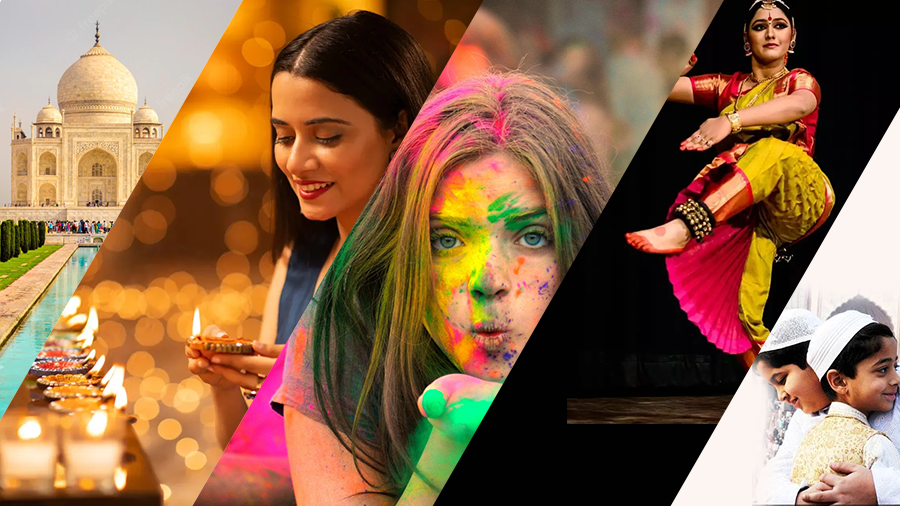
Uttar Pradesh: A Microcosm of Indian Political Dynamics
- admin
- September 10, 2025
- Capital Journal, Politics
- 0 Comments
Exploring how the state mirrors the complexities and vibrancy of India’s democracy.
Introduction
Uttar Pradesh (UP), India’s most populous state, is often regarded as the political heartland of the country. With 80 Lok Sabha seats and an electorate exceeding 150 million, the state’s political landscape is a microcosm of India’s diversity and complexity. From its dynamic caste equations to its role in shaping national policies, UP exemplifies the challenges and opportunities of Indian democracy. This article delves into how UP reflects the broader political dynamics of the nation.
The Political Significance of Uttar Pradesh
1. The Largest Political Constituency
- Influence on National Politics:
- With 80 Lok Sabha seats, UP is the largest single contributor to the Lok Sabha, often determining the composition of the central government.
- Historically, the party that dominates UP has had a stronghold on national power.
(Source: Election Commission of India)
2. Diverse Electoral Demographics
UP’s electorate is a microcosm of India, representing a broad spectrum of religions, castes, languages, and socio-economic backgrounds.
- Caste Dynamics:
- Dominant groups like the Yadavs, Dalits, and upper castes shape political strategies.
- Political parties like the Samajwadi Party (SP) and Bahujan Samaj Party (BSP) have built their bases around caste identities.
- Religious Plurality:
- With significant Hindu and Muslim populations, communal harmony and polarization often influence electoral outcomes.
(Source: UP Government Census Data)
How UP Reflects National Political Trends
1. Shifting Party Dynamics
The state has witnessed the rise and fall of major political parties, mirroring national trends.
- Congress Era (Pre-1990s):
- Dominance of the Indian National Congress reflected India’s post-independence political narrative.
- Mandal-Kamandal Politics (1990s):
- The rise of regional parties like the SP and BSP highlighted the significance of caste and identity politics.
- BJP Dominance (Post-2014):
- The BJP’s sweeping victories, particularly in 2014 and 2019, showcased the party’s ability to combine Hindutva and development narratives.
(Source: PRS Legislative Research)
2. The Role of Youth and Urbanization
As with India, UP’s political landscape is being reshaped by its growing youth population and urban centers.
- Youth Influence:
- Over 50% of UP’s population is under the age of 30, making youth-centric policies crucial for electoral success.
- Urban Growth:
- Cities like Lucknow, Kanpur, and Noida are becoming political battlegrounds where development narratives take precedence.
3. Electoral Innovations
The state has been a testing ground for innovative electoral strategies.
- Examples:
- Use of social media and technology for voter outreach.
- Mobilization of self-help groups and grassroots organizations to engage rural voters.
(Source: Digital India Initiative)
Challenges in Uttar Pradesh’s Political Landscape
1. Regional Disparities
- Issue:
- Economic and developmental divides between western UP and regions like Bundelkhand and Purvanchal often translate into distinct political priorities.
2. Polarization
- Impact:
- Religious and caste-based polarization continues to shape electoral strategies, occasionally overshadowing developmental agendas.
3. Voter Awareness
- Challenge:
- Despite its political significance, voter turnout in UP often lags behind the national average, particularly in urban areas.
Strategies for Political Engagement
1. Inclusive Policy Narratives
Political parties must address the needs of both rural and urban voters, balancing caste-based appeals with development-focused agendas.
2. Youth-Centric Campaigns
Targeting issues like employment, education, and digital infrastructure can resonate with UP’s young voters.
3. Strengthening Grassroots Democracy
Encouraging participation at the panchayat and municipal levels can bridge the gap between local issues and state-level politics.
Expert Opinions
- Political Scientist’s Insight:
- “UP’s political trends are often a precursor to national narratives. The state’s ability to integrate its diversity into a cohesive democratic framework is remarkable.”
- Sociologist’s Perspective:
- “The interplay of caste, religion, and development in UP offers valuable lessons on how democracy adapts to societal complexities.”
(Source: UP Government Reports)
Conclusion
Uttar Pradesh serves as a microcosm of Indian political dynamics, reflecting the diversity, challenges, and vibrancy of the nation’s democracy. Its pivotal role in national politics, coupled with its complex socio-economic landscape, underscores its importance as a bellwether for India’s democratic health. As UP continues to evolve, its political landscape will remain a critical barometer for understanding the broader trends shaping Indian democracy.


